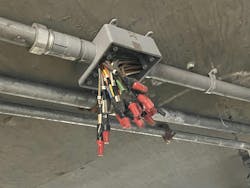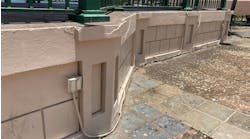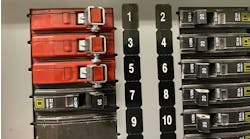How well do you know the Code? Think you can spot violations the original installer either ignored or couldn’t identify? Here's your chance to moonlight as an electrical inspector and second-guess someone else's work from the safety of your living room or office. Can you identify the specific Code violation(s) in this photo? Note: Submitted comments must include specific references from the 2023 NEC.
Hint: Pump up the volume
Tell Them What They've Won…
Using the 2023 NEC, correctly identify the Code violation(s) in this month's photo — in 200 words or less — and you could win an Arlington Industries 18-in. Slider Bar and plastic box for mounting between studs with non-standard spacing. E-mail your response, including your name and mailing address, to [email protected], and Russ will select three winners (excluding manufacturers and prior winners) at random from the correct submissions. Note that submissions without an address will not be eligible to win.
February Winners
Our only winner this month was Jake Jakobson, a control panel engineer for Q-PAC in Elkton, Fla. Jake knew copper wire handle ties do not comply with the Code.
When it came to installing handle ties for circuit breakers, this installer used some scrap wire and jammed a piece of copper through the holes in the handles of circuit breakers 16 and 18 in an attempt to comply with the Code. Unfortunately, they fell a little short.
For multiwire branch circuits, Sec. 210.4(B) requires a disconnecting means that will simultaneously disconnect all ungrounded conductors of the branch circuit. That same Section makes no mention of handle ties though. Thankfully, other rules do address handle ties. Section 240.15(B)(1) through (B)(5) address several installations where single-pole circuit breakers can be used with handle ties. In each one of those situations, identified handle ties are required to be used. A piece of copper wire is not an identified handle tie. The handle tie installed on the 2-pole breaker at circuits 12 and 14 is a good example of an identified handle tie. That same type of handle tie could be used for single-pole breakers on multiwire branch circuits as specified in Sec. 240.15(B)(1) and the other circuits specified in Sec. 240.15(B).






